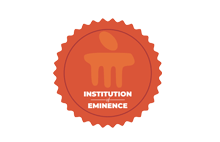Tailoring transfusion strategy using thromboelastogram in goal‑directed massive transfusion: Impact on transfusion requirements and clinical outcomes
Document Type
Article
Publication Title
Asian Journal of Transfusion Science
Abstract
BACKGROUND AND OBJECTIVE: We compared the overall clinical outcome in formula‑based protocol (1:1:1) and thromboelastogram (TEG)‑guided goal‑based massive transfusion (MT) in the resuscitation of patients with hemorrhagic shock. MATERIALS AND METHODS: This was a retro‑prospective case–control study conducted over a period of 2 years among the patients who received MT using a 1:1:1 fixed ratio protocol (controls, Group A) and goal‑based protocol (cases, Group B) guided through TEG. Patients were matched for the type and severity of the clinical conditions. Utilization of blood components, clinical outcomes, transfusion‑related complications, and total mortality rates were compared between the groups. RESULTS: There were 113 patients in the formula‑based group and 109 patients in the goal‑based transfusion group who were matched for injury severity scores. The total blood components utilized were 1867 and 1560, respectively, with a 17.7% reduction associated with the use of TEG. Patients were divided into normal, hypo, and hypercoagulable based on TEG, and a higher transfusion rate was associated with hypocoagulable TEG (942 vs. 610). The prothrombin time, activated partial thromboplastin time, R time, and K time had a significant positive correlation with the need to transfuse more than 20 blood components, whereas platelet count, base excess, alpha angle, MA, and CI had a negative correlation (r = 0.268, P < 0.001). At the end of goal‑directed transfusion, 75% of the patients were free of transfusion support (vs. 65.4%) and only 6.9% of the patients had coagulopathy (vs. 31.8%) compared to formula‑based resuscitation with a 10% reduction in mortality. CONCLUSION: TEG‑guided goal‑based approach helped to reduce blood component utilization with a reduced incidence of coagulopathy at the end of the MT while improving patient survival.
First Page
7
Last Page
15
DOI
10.4103/ajts.ajts_56_23
Publication Date
1-1-2024
Recommended Citation
Prethika, P. A.; Mohan, Ganesh; Shastry, Shamee; and Balakrishnan, Jayaraj Mymbilly, "Tailoring transfusion strategy using thromboelastogram in goal‑directed massive transfusion: Impact on transfusion requirements and clinical outcomes" (2024). Open Access archive. 10929.
https://impressions.manipal.edu/open-access-archive/10929


